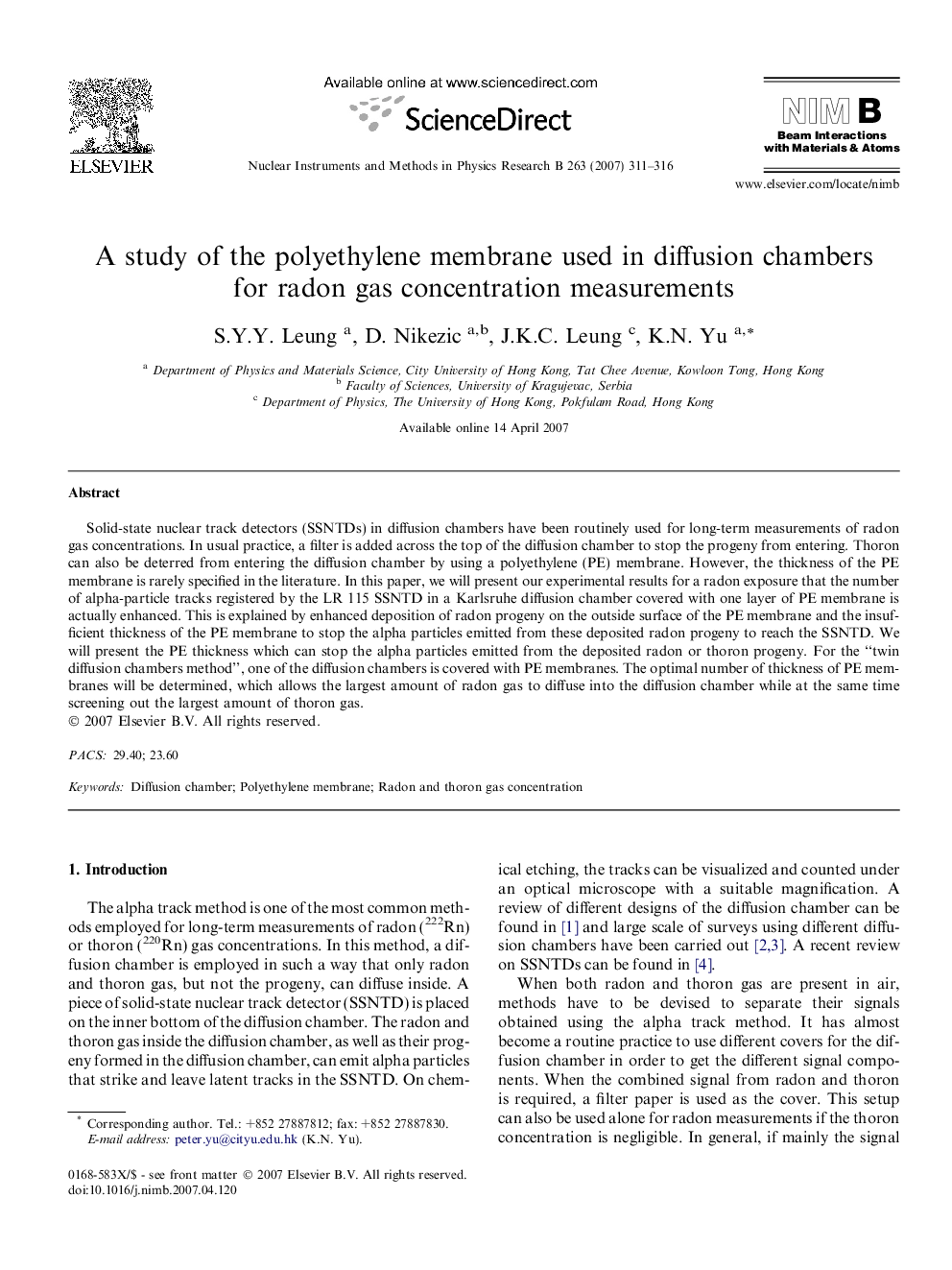| Article ID | Journal | Published Year | Pages | File Type |
|---|---|---|---|---|
| 1684421 | Nuclear Instruments and Methods in Physics Research Section B: Beam Interactions with Materials and Atoms | 2007 | 6 Pages |
Solid-state nuclear track detectors (SSNTDs) in diffusion chambers have been routinely used for long-term measurements of radon gas concentrations. In usual practice, a filter is added across the top of the diffusion chamber to stop the progeny from entering. Thoron can also be deterred from entering the diffusion chamber by using a polyethylene (PE) membrane. However, the thickness of the PE membrane is rarely specified in the literature. In this paper, we will present our experimental results for a radon exposure that the number of alpha-particle tracks registered by the LR 115 SSNTD in a Karlsruhe diffusion chamber covered with one layer of PE membrane is actually enhanced. This is explained by enhanced deposition of radon progeny on the outside surface of the PE membrane and the insufficient thickness of the PE membrane to stop the alpha particles emitted from these deposited radon progeny to reach the SSNTD. We will present the PE thickness which can stop the alpha particles emitted from the deposited radon or thoron progeny. For the “twin diffusion chambers method”, one of the diffusion chambers is covered with PE membranes. The optimal number of thickness of PE membranes will be determined, which allows the largest amount of radon gas to diffuse into the diffusion chamber while at the same time screening out the largest amount of thoron gas.
